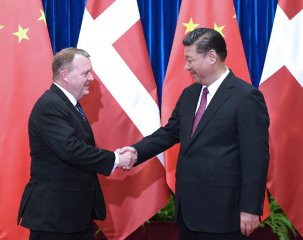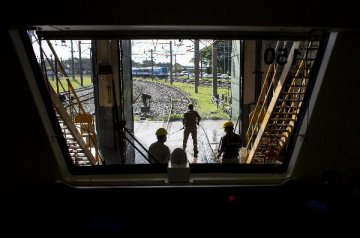
The Belt and Road Forum for International Cooperation will convene in Beijing from May 14 to 15, with the aim of strengthening partnership on the Belt and Road Initiative and advancing international cooperation for development.
More than three years after being proposed in 2013, the initiative, which envisions a trade and infrastructure network connecting Asia with Europe and Africa, has borne rich fruit. Here are highlights of the early successes achieved under the initiative:
INVESTMENT & TRADE
-- Since 2013, China has invested more than 50 billion U.S. dollars in countries along the Belt and Road. In 2016 alone, direct investment reached 14.5 billion dollars, or 8.5 percent of China's total outbound investment.
--China signed 126 billion dollars worth of new contracts for projects in countries along the Belt and Road in 2016, up 36 percent year on year.
-- China's trade with countries along the Belt and Road rose 0.5 percent year on year to 6.25 trillion yuan (906.3 billion dollars) in 2016, compared with a 0.9-percent decline in the country's overall foreign trade.
CAPACITY COOPERATION
-- As of the end of 2016, Chinese businesses had built 56 economic and trade cooperation zones in more than 20 countries along the Belt and Road, with the total investment exceeding 18.5 billion dollars, generating nearly 1.1 billion dollars in tax revenue and creating nearly 180,000 local jobs.
-- China has industrial capacity cooperation systems with nearly 20 countries. Notably, China and Kazakhstan have signed 51 major cooperation projects worth 27 billion dollars.
CONNECTIVITY PROGRESS
China has signed more than 130 bilateral and regional transport agreements with countries involved in the Belt and Road to improve connectivity.
China-Europe express freight trains have covered 28 cities in 11 European countries since being launched in 2011. More than 3,500 trips have been made so far, and the figure is planned to rise to 5,000 a year by 2020.
The China-Pakistan Economic Corridor, one of the six economic corridors envisaged by the Belt and Road Initiative, has seen rapid progress, with major highway, railway and port projects under way.
Construction has started or neared completion on other large transport infrastructure projects along the Belt and Road, including the Colombo Port City and Hambantota Port in Sri Lanka, the Jakarta-Bandung high-speed railway in Indonesia and the Mombasa-Nairobi railway in Kenya.
FINANCIAL SUPPORT
China has contributed 40 billion dollars to set up a Silk Road Fund to finance Belt and Road projects. The fund has launched its first round of investment, with 5.3 billion dollars already allocated.
The Asian Infrastructure Investment Bank was established in 2015 to fund infrastructure improvement in Asia, with an authorized capital of 100 billion U.S. dollars. The multilateral development bank's total lending exceeds 2 billion dollars so far.
CONSENSUS BUILDING
Over 100 countries and international organizations have responded warmly to the Belt and Road Initiative, with more than 40 signing a total of over 50 agreements of cooperation with China.
Many countries and regions along the Belt and Road have considered integrating the initiative with their own development programs, including Mongolia's Prairie Road, Kazakhstan's Nurly Zhol (Bright Path), the Russia-led Eurasian Economic Union and the EU's Junker Investment Plan.
The United Nations General Assembly and the UN Security Council have incorporated the initiative into their resolutions.
CULTURAL EXCHANGES
As of the end of 2016, China had signed more than 300 inter-governmental agreements and implementation programs on cultural exchanges and cooperation with countries along the Belt and Road. Altogether 11 Chinese cultural centers had been established in these countries.
China has set up an official Silk Road scholarship and held cultural events and art festivals with Belt and Road countries.
The ancient Silk Road was inscribed on the UNESCO World Heritage list in 2014, and a joint application has started for the inclusion of the Maritime Silk Road.
























Latest comments